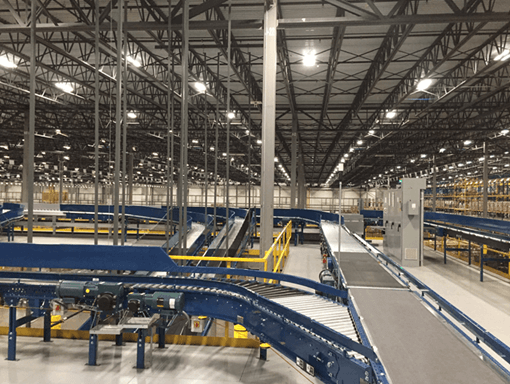Conveyor Tips
Is it time to design or reconfigure your warehouse, distribution, or fulfillment center with a new or improved conveyor system? If so, the experts at Hy-Tek Material Handling, LLC. offer these great tips to help get you started.
If you took the time to review all the conveyor options on the market today, your head would probably spin. There are so many different types and usages that many manufacturers publish booklets on what makes each conveyor unique and the typical applications for their use. When selecting the ideal conveyor solution for your warehousing, distribution, or fulfillment center, what is the best approach? Take a look at these five quick tips and learn what steps to take when evaluating conveyor systems.
- Most people fail at the outset of a conveyor design project by not knowing their products and rates before assigning pieces of equipment to a system. The first question to always tackle is, “What are you handling?” Only by establishing the size, shape, type of carton or totes, weights, and rates of product movement do you have the essential information to begin sourcing what conveyors are suited to each aspect of your application.
- No matter the budget or size of your facility, there is no such thing as simply buying “the most common type of conveyor” for any given situation. You may want specific equipment, such as sorters or powered rollers, but in the end, it could be under kill or overkill for your system. The product dictates which equipment is appropriate to install, regardless of the market’s newest or most affordable unit.
- Be cautious of statements like, “It just likes this, except…” It’s either exactly the same or it isn’t. While it’s possible for designs to look similar or have comparable components, if the products are different, it will likely require a different solution. Never cheat yourself out of having the ideal design created for your particular application. Keep in mind to address whether a system is needed to scale up or down to handle seasonal or impending products.
- While you want to have a customized solution for your conveyor system, it’s typically preferred to use standard components specified to your length, width, and speed needs. It’s not that incorporating custom-designed equipment is unacceptable; it simply makes smart financial sense to use elements that are easy to obtain spare parts, maintain and allow for seamless future modifications.
- In addition to considering size, shape, type of carton or totes, weights, and product rates note that the facility environment will also direct what systems components are used. Significant changes in temperature or humidity can severely impact the way a product will handle. This is especially true when working with corrugated packaging, as it can go from rigid to flimsy based totally on fluctuating temperature and air quality. That is why one of the most challenging items to manage in material handling is empty boxes. Beyond the environmental effects, they bounce, slide, tip, skip, and even blow away if near an industrial fan.
Every type of conveyor is meant to serve a purpose. However, a lot of the experience that systems integrators bring to the table comes from constant trial and error. Talented integrators know how to work with each conveyor type to configure the most efficient system, precisely for your application. Therefore, working with an experienced material handling professional is the surest way to successfully plan and implement your optimal solution. Contact Hy-Tek today to implement your conveyor solutions!





